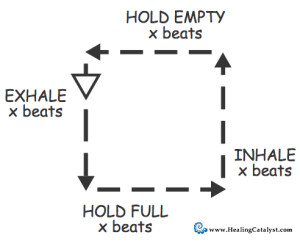How to build a Meditation Habit
You may realize that a meditation habit is a good idea, but how do you get yourself to do it consistently? Understand what’s involved and build a practice slowly, one step at a time.
To meditate does not mean to fight with a problem.
To meditate means to observe.
Your smile proves it.
It proves that you are being gentle with yourself,
that the sun of awareness is shining in you,
that you have control of your situation.
You are yourself,
and you have acquired some peace.
~ Thich Nhat Hanh
Several people have asked me to do a post on meditation and I’ve hesitated, wondering what I could possibly contribute to the g’zillion meditation books, courses, articles, posts, retreats, ashrams, and practices that already exist. The more I thought about it though, I realized that the hardest part, like with most healthy practices, is getting started and holding space for it. And that is something I can speak to. Once you have some momentum going toward the habit, meditating itself is pretty simple and easy.
You’ve probably heard about the many benefits of Meditation. In a nutshell, it is a slowing of breath and pulling your focus inward; it reverses many of the physiological effects of stress by calming and resetting your nervous systes and provides a portal to an elevated or higher state of consciousness.
Counter the overload
Most of us live in a mild state of sympathetic overload – agitated, somewhat anxious, and focused on What Already Happened or The Next Thing rather than the present moment. The sympathetic nervous system kicks in for the fight or flight response in response to perceived threat (i.e. stress): elevated heart rate, dilated pupils, diverts blood and energy away from the organs and into our hands and feet to claw or run. This sympathetic state is exhausting, and our bodies aren’t built to stay that way. Engaging the parasympathetic nervous system by slowing your breathing calms anxiety, allows digestive function to resume, and generally resets the body into relaxation and health. Think “Flight or Flight v Rest and Digest” Further, slow deep breathing alkalizes the body. Stressed, shallow-fast breathing acidizes it. You can see where this is going….
What is Mediation?
So, what is it? Essentially, meditation is settling into yourself. In some way, you take your focus off the outer world and bring it inside, in some way on your breath. You can sit, walk, or lie down. You can meditate doing other (calm) things. Whether you consciously slow your breathing by counting, focus on a mantra, chant, or use another vehicle to bring you inward, a meditative state is characterized by calm, deepened breathing, and a return to the parasympathetic nervous system.
It’s not simply a hyper-focused state. To get there, you can have talk before silence, no talk, music, a visual focal point, closed eyes… Most meditative traditions insist on a few specific practices to hold your focus and provide the way in – but those specific practices can vary. The gist is the calm breathing, doing something specific – if even just calming your mind – and doing it repeatedly as a practice over time.
Drink your tea slowly and reverently,
as if it is the axis on which the world earth revolves
– slowly, evenly, without rushing toward the future;
Live the actual moment.
Only this moment is life.
~ Thich Nhat Hanh
The Practice is the Way IN
The result can be anything from feeling refreshed and rested to an expanded awareness of yourself and your place in the cosmos.
Calming your mental chatter can allow hidden emotions to surface. That, more than anything, is what most people fear about meditation. The Buddhist Tradition (home of arguably the world’s foremost meditators) would have you notice fear, sadness, joy, and curiosity with equal tenderness – making space for all of it. Meditation, they insist, is the way to inner peace and self-mastery.
You can build self-mastery with understanding of the process and a dedication to doing it. It doesn’t have to be religious or formal and you don’t have to sit in lotus position, with your legs crossed. Puttering in your garden; walking the dog, rocking a baby – slowing down with gentle, repetitive motions, or attunement with nature can be meditative. Anything that slows your breathing and brings you into alignment with yourself can be a meditation.
Thich Nhat Hanh, the renowned and beloved Vietnamese Zen Buddhist monk, poet and author, says that it is very hard to hold a spiritual practice on your own with all of life’s distractions. If you were living in a hermitage and all you had to attend to was a few basic needs and your spiritual practice, it would be easier to do it on your own. If you didn’t grow up in a family that meditates regularly or don’t belong to a community that meditates regularly (i.e. most Westerners), it’s very hard to carve out that kind of mindfulness on our own. But it can be done.
My practice
I’ve been meditating almost every Monday night for 27 years with 2-3 girlfriends, all of us spiritually dedicated to the practice, and all of us enriched by it. Even though our group is small, there is a group dynamic and we hold the habit together. Despite this, I don’t consider myself a veteran meditator because I haven’t built the habit of meditating on my own. That takes a different kind of space holding that I am just now learning to do.
I’ve started by breathing calmly and giving thanks (gratitude) every morning before I get out of bed. I have also set up a comfortable chair that I’m calling “the meditation chair” and every time I look at it, I see it holding space for my practice. It invites me to sit and breathe. It makes me smile. I have to take many more steps to establish a lasting groove but the only way to do that is take one step at a time.
Nature Can Help
Gentleness and calm are called for and Nature can give you those.
It certainly works for me. Hanging out with animals or small children is also a great way to slow down and tune “in.”
The word “mindfulness” can be confusing. Meditation is not filling your mind with more thoughts. It’s really emptying it of your worldly chatter and allowing it to fill with the Universal mind.
If you only get one thing out of this article, understand that there’s no way to get it wrong. Sitting for even 5 minutes and breath a little deeper is enough. If you even take some small, quieting action, that’s a start. What it looks like doesn’t matter; it’s the experience that counts. Breathing consciously for 5 minutes – even if your mind babbles at you the entire time – that’s enough. In fact, your mind will babble, maybe even scream. But like a kid who needs mom’s attention, if that kid gets what it needs, it quiets down. Stay with it. That’s the love, the loving practice. In my personal experience, my resistance to a change of habit is in direct proportion to how much I need it.
Start small, acknowledge ANY step toward a new, positive practice and do a tiny bit more tomorrow. Repeat. The benefits are palpable and huge.

If you want a simple, neutral breathing practice that anyone can do any time, + clear instructions: check out Chapter One – “Breathing Like You Mean It”, in my book, Issues in Your Tissues.
#meditation #mindfulness #calm #healing #ThichNhatHanh

